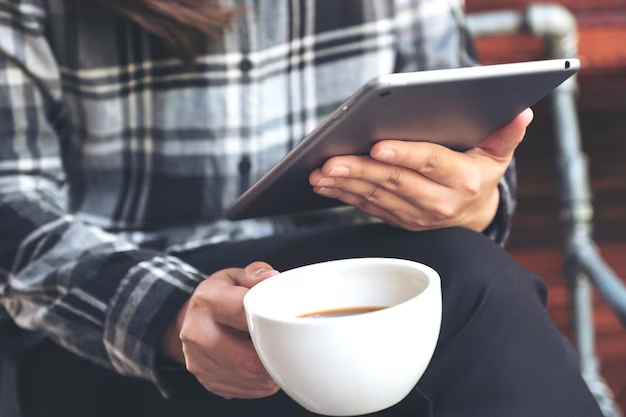Effortlessly Transfer Your Favorite Apps from iPhone to iPad
Have you ever felt the need to enjoy your favorite iPhone apps on a larger screen or wondered how to keep your app environments seamlessly synced across your Apple devices? Well, transferring apps from your iPhone to your iPad can offer a smoother, more visually engaging experience. Let’s explore the best ways to make that happen easily and effectively.
Why Transfer Apps from iPhone to iPad?
In today’s interconnected world, the ability to switch smoothly between devices without losing functionality or data is crucial. Whether you want to enjoy gaming on a bigger screen or access productivity apps with greater ease, transferring apps can enhance your digital experience.
Benefits of Transferring Apps
- Larger Screen Advantage: The iPad's larger screen offers a more immersive experience for apps related to reading, video, and gaming.
- Improved Productivity: Workflow apps benefit from additional screen real estate offered by an iPad, allowing for multitasking and a clearer view of documents and spreadsheets.
- Seamless Ecosystem: Apple’s ecosystem is designed for synergy; having your apps on multiple devices ensures maximum flexibility.
How to Transfer Apps Using Your Apple ID
Setting Up for Success
Before you start transferring apps, ensure the following:
- Both devices use the same Apple ID.
- Your iPad is updated to the latest iOS version for compatibility and security.
Steps to Transfer Apps
Check iCloud Settings:
- On your iPhone, go to Settings > [Your Name] > iCloud.
- Make sure that iCloud Drive is enabled, ensuring app data syncs.
App Store Settings:
- On both your iPhone and iPad, navigate to Settings > App Store.
- Enable Apps under Automatic Downloads to allow apps downloaded on one device to appear on the other.
Download Apps from App Store:
- Open the App Store on your iPad.
- Tap on your account icon and navigate to Purchased.
- Switch to “Not on this iPad” to find apps available to download.
Key Takeaways
- Using automatic downloads with the same Apple ID ensures that new apps appear on all your devices.
- Ensure iCloud settings are correctly configured for continuous synchronization of app data.
Using iTunes or Finder to Transfer Apps
Transfer with iTunes (macOS Mojave and earlier)
Connect Your iPhone to Your Computer:
- Open iTunes and select your device.
Backup Your iPhone:
- Ensure your data is secure by creating a local backup on your computer.
Connect Your iPad:
- Select the iPad once connected.
Restore Backup:
- Choose Restore Backup from the iPhone’s backup list.
Transfer with Finder (macOS Catalina and later)
Connect Devices:
- Use a USB cable to connect your iPhone and then your iPad to your Mac.
Transfer Settings:
- Select your device in Finder’s sidebar. Use Back Up Now to secure current data.
- Restore through the same avenue, selecting the backup relevant to your iPhone.
Consider These Tips
- Backup regularly to ensure current data is available for restoration at all times.
- This method cannot transfer apps individually; it will replace iPad data with the iPhone's.
App Data Synchronization via iCloud
Apart from transferring apps, it's equally important to sync relevant app data seamlessly.
Steps to Ensure Data Sync
Apple Settings:
- Navigate to Settings > [Your Name] > iCloud on both devices.
- Toggle the switches for individual apps you wish to synchronize data on.
Verify Storage Capacity:
- Check iCloud Storage under settings to manage available space for app data backup.
How This Helps
- Secure Data: Even if apps aren’t individually reposted, your data will safely exist across devices.
- Continuity Features: Enjoy playing a game on your iPhone and pick up right where you left off on your iPad.
Utilizing Third-Party Tools for a Custom Transfer
When default methods don't suit your needs, third-party tools can transfer apps and detailed data.
Popular Options
iMazing:
- Offers granular control over data transfer, including app preferences and save files.
AnyTrans:
- Provides comprehensive cross-device data management and app transfer capabilities.
What to Remember
- Check User Reviews and Compatibility: Ensure the tool supports your iOS versions.
- Data Security: Always prioritize tools with robust privacy assurances.
Summary: Quick Tips for Transferring Apps
🚀 Effortless Transfers:
- Use your Apple ID on both devices for automatic downloads.
- Backup regularly in iTunes/Finder for a complete data overhaul.
- iCloud ensures app data sync for ongoing use across devices.
- Consider third-party tools for advanced custom transfers.
🔥 Key Actions:
- Enable Automatic Downloads in the App Store settings.
- Confirm that iCloud Drive is active for relevant apps.
- Explore tools like iMazing if in need of tailored transfers.
Embracing the flexibility of using your apps across devices enhances productivity and entertainment value—especially when you have the right steps and tools in hand. Now, whether it's gaming, productivity, or just enjoying your preferred apps on a larger screen, transferring from iPhone to iPad has never been easier! Enjoy the seamless integration and stop worrying about missing out on the best of your apps!

Related Topics
- How Can I Transfer a Video From Iphone To Computer
- How Can I Transfer Apps From Iphone To Ipad
- How Can I Transfer Apps From One Iphone To Another
- How Can I Transfer Contacts From Iphone To Iphone
- How Can I Transfer Contacts From One Iphone To Another
- How Can I Transfer Data From Iphone To Android
- How Can I Transfer Data From Iphone To Iphone
- How Can I Transfer Data From Iphone To Samsung
- How Can I Transfer Files From Android To Pc
- How Can I Transfer From Iphone To Samsung